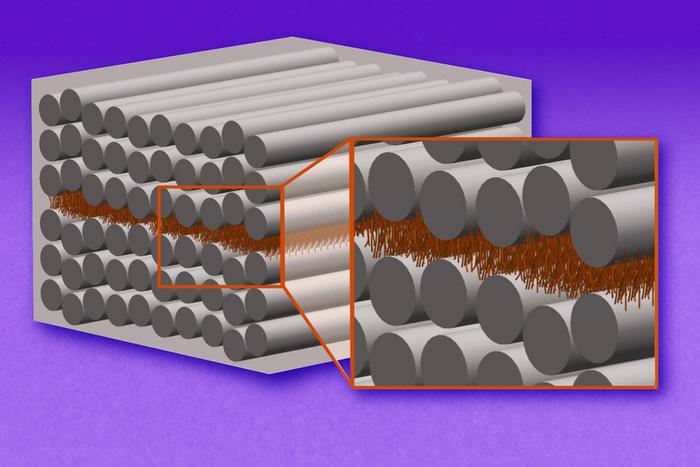How the Brain Deciphers Conflicting Hypotheses
In navigating complex environments, both humans and animals rely heavily on landmarks to orient themselves and reach their destinations effectively. Yet, circumstances often arise where landmark ambiguity imposes a significant cognitive challenge. When cues are not straightforward—such as encountering multiple similar-looking buildings or indistinguishable visual markers—navigation demands advanced reasoning to discriminate among possible spatial hypotheses. […]


In navigating complex environments, both humans and animals rely heavily on landmarks to orient themselves and reach their destinations effectively. Yet, circumstances often arise where landmark ambiguity imposes a significant cognitive challenge. When cues are not straightforward—such as encountering multiple similar-looking buildings or indistinguishable visual markers—navigation demands advanced reasoning to discriminate among possible spatial hypotheses. In a groundbreaking study published in Nature Neuroscience, a team of MIT neuroscientists reveals that the brain actively encodes multiple possible spatial hypotheses simultaneously, enabling effective decision-making amid uncertain or ambiguous contexts.
This pioneering research focuses on the retrosplenial cortex (RSC), a brain region implicated in spatial cognition and navigation, elucidating how it employs recurrent neural dynamics to represent competing navigational possibilities. Crucially, the study demonstrates that rather than a singular, static representation, the RSC dynamically holds and manipulates distinct neural activity patterns, each corresponding to different hypotheses about an organism’s position relative to environmental landmarks. These neural ensembles are not only passive containers of memories but pivotal computational substrates that guide choices in real time.
Previous investigations into the RSC have established its role as an integrative hub receiving convergent inputs from the visual cortex, the hippocampal formation, and the anterior thalamus, each providing complementary spatial and sensory information. Building on a 2020 study from the same laboratory, which showed that RSC neurons fuse visual and positional data to identify rewarding locations on a track, the current work ventures into more complex navigational scenarios. The researchers designed a sophisticated behavioral paradigm involving a circular arena punctuated by sixteen evenly spaced ports, challenging mice to discern rewarding locations based on subtle and ambiguous visual cues.
.adsslot_eVA07BZisO{ width:728px !important; height:90px !important; }
@media (max-width:1199px) { .adsslot_eVA07BZisO{ width:468px !important; height:60px !important; } }
@media (max-width:767px) { .adsslot_eVA07BZisO{ width:320px !important; height:50px !important; } }
ADVERTISEMENT
The task’s complexity arises when two identical light dots appear equidistant from each other and the arena’s center but on different ports; mice must determine which dot corresponds to the reward by integrating path integration, self-motion cues, and spatial memory. Significantly, the dots only become visible when animals are in close proximity, preventing simultaneous observation and immediate discrimination. This design compels the mice to maintain short-term memory traces and to flexibly update their hypotheses about landmark identity as they navigate.
Neural recordings from the RSC during task performance revealed that distinct ensembles of neurons exhibited activity patterns corresponding to alternative spatial hypotheses. These neural states coexisted as the mouse approached ambiguous cues, effectively encoding multiple potential realities within the same neural substrate. As the animal advanced and sensory information became clearer, these competing representations converged, collapsing into a singular pattern that matched the correct spatial hypothesis, thereby enabling the animal to select the appropriate port and obtain the reward.
This dynamic encoding underscores a vital computational principle: the brain performs probabilistic reasoning by actively maintaining and evaluating multiple potential interpretations of ambiguous stimuli before committing to a decision. Unlike mere memory storage, this neural mechanism reflects a form of active inference, whereby the RSC continuously integrates incoming sensory data with internal spatial models to refine the estimate of current location and to direct behavior accordingly.
The study’s conceptual advancement was partially inspired by computational models analyzed in collaboration with Professor Ila Fiete of MIT. Approximately a decade prior, Fiete and colleagues employed artificial recurrent neural networks trained on similar spatial tasks, discovering that these networks developed interconnected, low-dimensional dynamic attractor states resembling biological neural activity patterns. The notable parallel between these artificial models and the RSC’s neural ensembles suggests a conserved dynamical principle underlying spatial cognition, with recurrent connectivity facilitating the flexible transition between competing hypotheses.
Such recurrent dynamics potentially afford robustness and adaptability, vital for survival in ever-changing environments where sensory information can be noisy or conflicting. The interconnected nature of these neural populations allows for simultaneous maintenance of multiple beliefs, gating mechanisms for hypothesis selection, and error correction as new data unfolds. This sophisticated neural processing supports conjectures that the RSC acts as a nexus for integrating sensory and mnemonic signals to optimize spatial decision-making.
Looking ahead, lead author Dr. Jakob Voigts plans to expand this line of research by investigating how the prefrontal cortex and other higher-order brain regions participate in naturalistic navigation and decision-making processes. Moving beyond artificially imposed tasks, this endeavor aims to decipher how mice—and perhaps other animals—self-organize knowledge acquisition when freely exploring complex environments, shedding light on learning and memory beyond conventional laboratory paradigms.
From a broader perspective, these findings challenge prior assumptions that cognitive representations in spatial tasks are singular and static. Instead, they reveal that the neural code is inherently dynamic, representing multiple, coexisting possibilities that are resolved over time through interaction with environmental inputs. This nuanced understanding opens new vistas in neuroscience, with potential translational applications for artificial intelligence, robotics, and understanding navigation deficits in neurological diseases.
Moreover, the elucidation of neural mechanisms underlying hypothesis generation and selection enriches cognitive neuroscience’s theoretical framework, suggesting that similar principles could govern reasoning and decision-making across diverse cognitive domains. The discovery of explicitly encoded, competing hypotheses in the brain beckons further inquiry into how such representations support flexible behavior, learning, and adaptive planning.
Funded by the National Institutes of Health, the Simons Center for the Social Brain at MIT, the National Institute of General Medical Sciences, and the Center for Brains, Minds, and Machines supported by the National Science Foundation, this research represents a significant leap in decoding the neural computations of spatial reasoning. As neural recording technologies and computational models advance, the capacity to unravel such intricate brain dynamics continues to grow, promising deeper insights into the neural fabric of cognition itself.
Subject of Research: Animals
Article Title: Spatial reasoning via recurrent neural dynamics in mouse retrosplenial cortex
News Publication Date: 6-Jun-2025
Web References: 10.1038/s41593-025-01944-z
Keywords: Neuroscience, Behavioral neuroscience, Organismal biology, Anatomy, Central nervous system, Brain
Tags: ambiguity in spatial orientationbrain navigation strategiescognitive challenges in landmark ambiguitycomputational mechanisms of memory in navigationdecision-making in uncertain environmentsintegration of sensory inputs in the brainMIT neuroscience study on spatial awarenessneural dynamics in hypothesis encodingreal-time decision-making in complex environmentsretrosplenial cortex function in spatial cognitionrole of visual cues in navigationspatial hypothesis discrimination in navigation
What's Your Reaction?

































